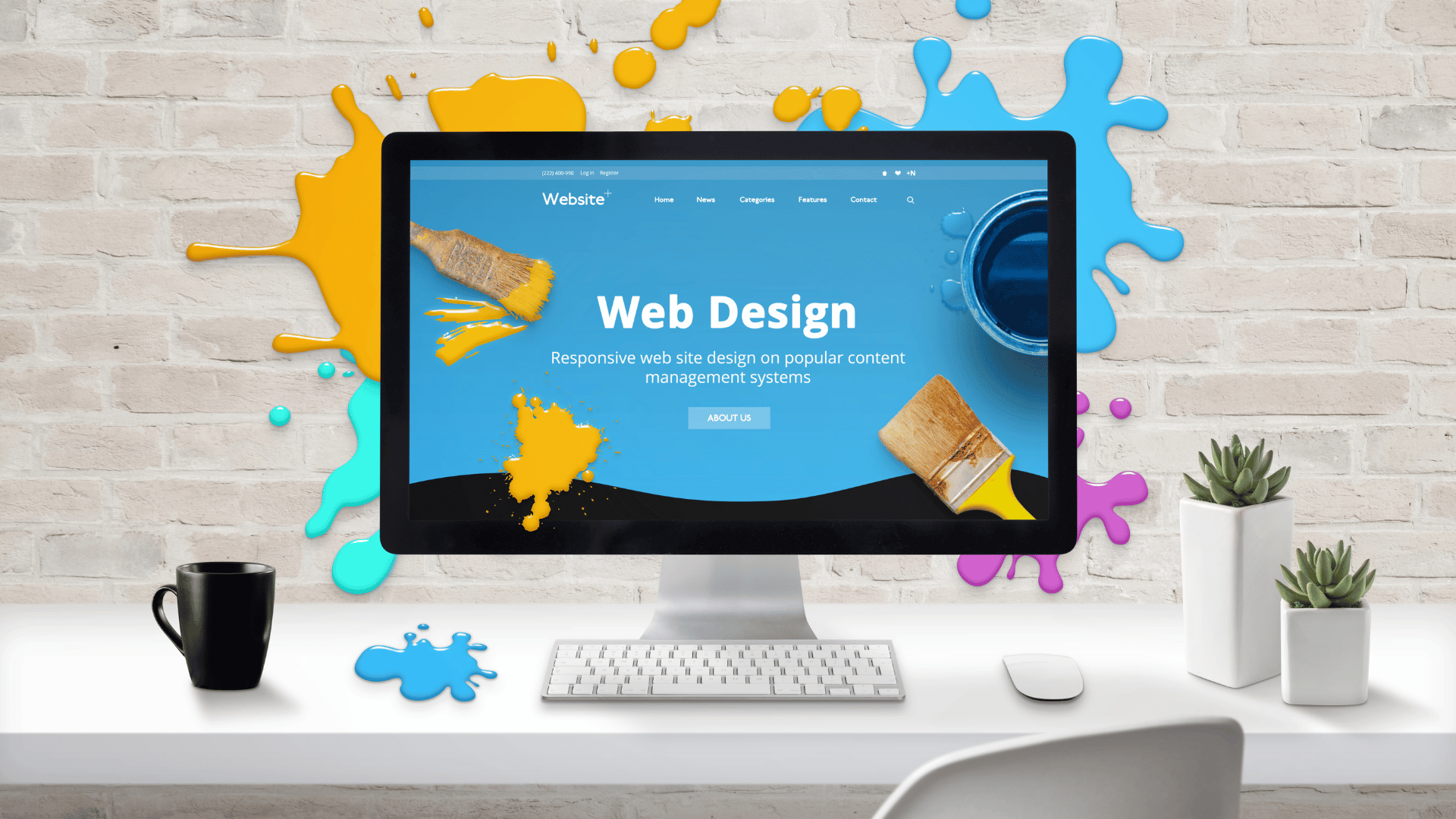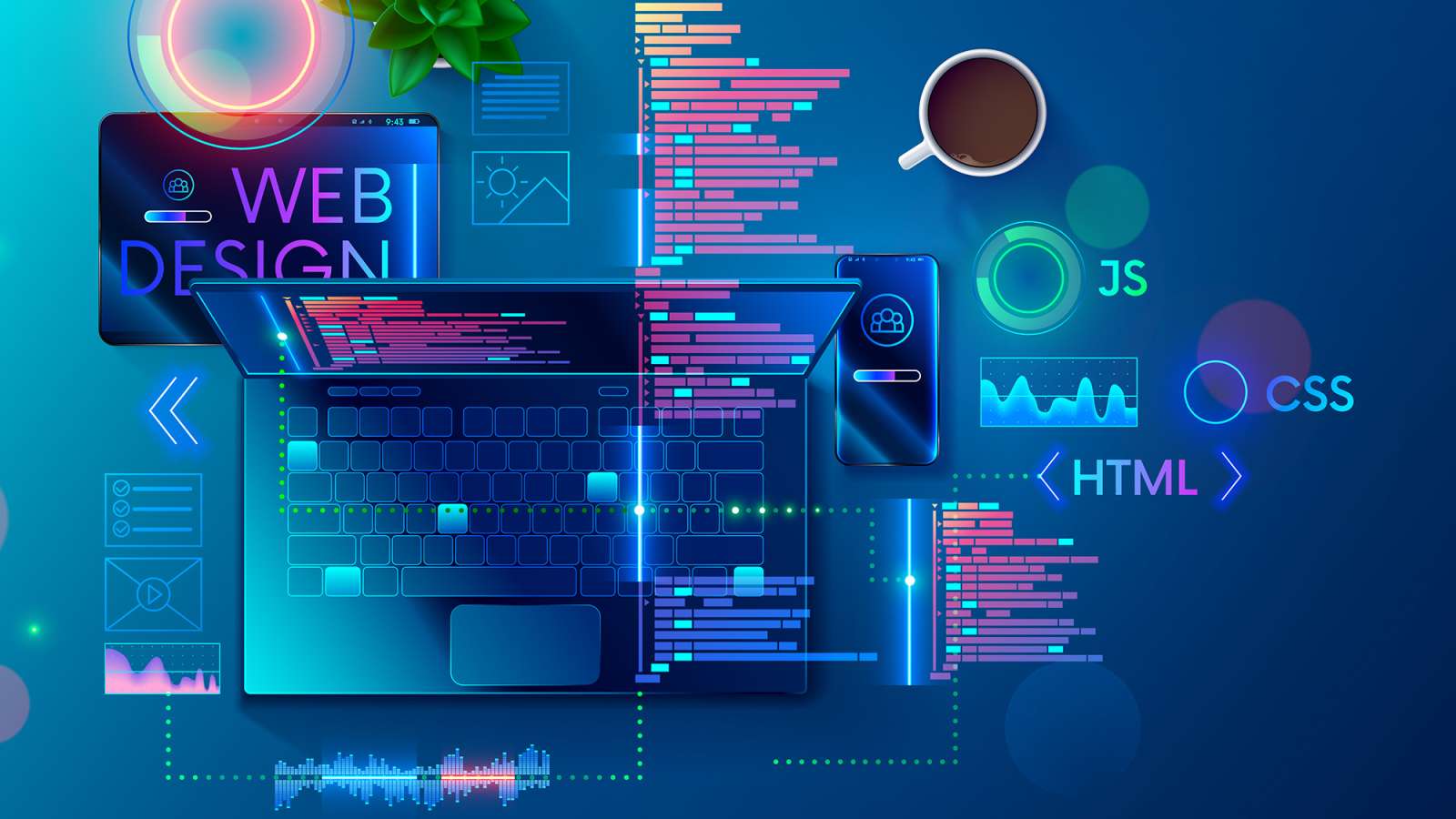Best mobile optimization tips from a professional Website Design Agency
Checking Out Innovative Fads in Web Design for Modern Services
The landscape of web design is continually developing, reflecting the vibrant demands of modern organizations. Current fads highlight a preference for minimalism, vibrant typography, and interesting interactivity. Firms increasingly prioritize user experience through mobile-first principles and individualized content. In addition, a focus on sustainability is getting grip. Recognizing these patterns is vital for companies aiming to stand out in a congested industry. What effects do these shifts hold for the future of electronic interaction?
Accepting Vibrant Typography
Strong typography has actually arised as a defining component in modern web design, recording focus and sharing messages with striking quality. This fad prioritizes aesthetically impactful text that boosts user involvement and brand name identity. Designers commonly utilize extra-large font styles and special typefaces to develop a pecking order, guiding visitors via content perfectly.
The strategic use of bold typography enables for efficient narration, making it possible for brands to communicate their worths succinctly. It serves not only visual purposes but additionally useful ones, as it enhances readability across tools and display sizes.
As web sites compete for user attention, vibrant typography stands apart in a saturated electronic landscape. Its convenience makes it possible for developers to experiment with contrasting shades and layouts, additionally enhancing its performance. Inevitably, accepting strong typography represents a change towards even more expressive and communicative web design, fostering a much deeper link between brands and their target markets.
The Surge of Minimalist Layout
As electronic atmospheres come to be increasingly messy, the rise of minimalist layout uses a revitalizing choice that focuses on simpleness and functionality. This layout viewpoint strips away unneeded components, enabling web content to take spotlight. By concentrating on clean lines, sufficient white area, and a limited shade scheme, minimalist layout enhances user experience and improves navigating.
Services embracing this fad aim to convey their brand name message plainly and properly, cultivating a sense of calmness and quality. The lack of diversions helps individuals concentrate on necessary information, resulting in boosted interaction and conversion prices. Additionally, minimal design aligns well with mobile-first methods, guaranteeing that internet sites continue to be user-friendly and obtainable throughout various tools.
Inevitably, the surge of minimal design shows a wider change in the direction of focusing on user requirements and choices, making it a powerful tool for modern-day businesses wanting to make a long lasting impact in the digital landscape.
Immersive Animations and Interactivity
While many internet designers embrace minimalist looks, one more engaging trend getting grip is the use of immersive computer animations and interactivity. This approach enhances user involvement by creating intriguing experiences that attract visitors into the content. Developers use dynamic components such as animated backgrounds, scrolling effects, and interactive infographics to communicate complicated concepts in an available fashion.
These computer animations not just provide aesthetic passion yet also overview customers through the navigation process, making interactions much more user-friendly. For example, float impacts and animated shifts can urge individuals to explore additionally, resulting in increased time invested in the site.
This fad straightens with the broader movement towards storytelling in internet layout, where computer animations offer as narrative gadgets that convey brand messages efficiently. By integrating immersive computer animations and interactivity, organizations can differentiate themselves in a congested online landscape, ultimately boosting user fulfillment and brand name loyalty.
Mobile-First Layout Concepts
Mobile-first design principles stress prioritizing user experience by ensuring web sites operate seamlessly on smaller sized displays. This strategy includes responsive layout techniques that adapt to various tool dimensions while preserving aesthetic stability. Furthermore, it focuses on touchscreen navigating layout, enhancing use for mobile users.
Prioritizing User Experience
Exactly how can developers properly prioritize user experience in an increasingly mobile-centric globe? Stressing mobile-first layout principles is essential, as customers largely engage with web sites via mobile phones. This technique motivates developers to streamline content, ensuring it is easily accessible and navigable on smaller sized displays. Secret methods consist of simplifying navigating, decreasing lots times, and utilizing touch-friendly elements that improve interactivity. Additionally, focusing on readable typography and instinctive formats can significantly boost user contentment. Designers should constantly gather user comments to improve their methods, adapting to progressing user needs and choices. By concentrating on these aspects, organizations can produce an interesting electronic experience that cultivates loyalty and drives conversions, eventually aligning with the expectations these days's mobile customers.
Receptive Layout Methods
Designers embrace receptive design methods to produce adaptable and adaptive web experiences that deal with various display sizes. This technique focuses on mobile-first layout principles, making certain peak capability on smaller gadgets before scaling up for larger screens. By using fluid grids, flexible photos, and media inquiries, designers can keep a cohesive aesthetic identity across all platforms. This approach not only boosts user involvement yet also improves online search engine rankings, as mobile-friendly sites are preferred by search formulas. In addition, receptive layouts enable companies to get to a more comprehensive audience, accommodating users on tablets, desktop computers, and smart devices alike. On the whole, executing these methods is essential for modern web design, ensuring that businesses continue to be competitive in an ever-evolving digital landscape.
Touchscreen Navigating Design
With the rise of mobile devices, touchscreen navigating has ended up being a fundamental facet of web design. Designers are increasingly embracing mobile-first concepts to enhance user experience and engagement. web design company. Efficient touchscreen navigation focuses on bigger buttons and user-friendly gestures, enabling customers to interact quickly with material. This method minimizes irritation and encourages expedition, as customers can navigate flawlessly with their fingers. Furthermore, integrating swipe motions and faucet capability deals with the all-natural habits of mobile users. Comments systems, such as visual hints and animations, boost usability even more by confirming actions. As more helpful hints touchscreens dominate user communications, utilizing these style components not only lines up with contemporary expectations however also fosters a much more obtainable and delightful searching experience for all individuals
Personalized User Experiences
What makes a customer really feel truly involved on an internet site? The solution typically depends on customized user experiences. By tailoring material and navigating to private preferences, services can develop a purposeful connection with their audience. This personalization can be accomplished through numerous approaches, such as assessing user behavior, utilizing cookies, and supplying customized recommendations based upon previous communications.
For instance, shopping platforms that suggest items based on surfing background not just improve user experience but also enhance conversion click now prices. Integrating dynamic web content that adjusts to the user's location or time of day can even more enrich engagement.
Furthermore, personalized introductions or messages can make customers really feel valued and understood. As modern-day organizations venture to attract attention in a competitive electronic landscape, accepting tailored user experiences becomes essential, cultivating commitment and motivating repeat gos to. Ultimately, this strategy transforms a conventional website into an interactive system that reverberates with its audience.
Sustainability in Web Design
As the electronic landscape remains to advance, the relevance of sustainability in web design has acquired significant focus. Developers are significantly conscious of the ecological effect their creations can have, motivating a shift in the direction of environmentally friendly practices (web design company). Lasting web design focuses on optimizing web sites to reduce energy usage and carbon impacts. Techniques include utilizing minimalistic design concepts, maximizing photos, and employing reliable coding practices to improve loading rates
Additionally, the option of holding service providers plays a vital role; several developers are currently choosing green hosting services powered by renewable power. By prioritizing access and easy to use navigation, lasting designs additionally provide to a more comprehensive target market, enhancing functionality. This aware approach not only attract environmentally-minded consumers but also adds to the overall durability and performance of web sites. Ultimately, sustainability in web design reflects a growing pattern in the direction of liable digital methods that line up with modern service worths.

Frequently Asked Inquiries
Exactly How Can I Select the Right Color System for My Website?
To pick the best shade plan for an internet site, one should take into consideration the brand's identity, target market, and emotional impact. Making use of shade theory and Recommended Reading testing mixes can enhance user experience and visual allure considerably.
What Are the most effective Devices for Prototyping Website Design?
The most effective tools for prototyping web designs consist of Figma, Map out, Adobe XD, and InVision. These systems offer instinctive user interfaces, cooperation functions, and comprehensive libraries, making them ideal for designers to produce and refine their ideas successfully.
Just how Do I Determine the Performance of My Web Design?
To gauge web design efficiency, one ought to examine user involvement metrics, conversion rates, and use comments (Web Design services). A/B testing and heatmaps can likewise supply insights into user behavior, leading needed adjustments for better efficiency and user experience
What Prevail Web Design Errors to Avoid?
Typical web design mistakes consist of cluttered layouts, inadequate navigating, slow loading times, absence of mobile optimization, inadequate comparison, and disregarding user comments. Avoiding these pitfalls enhances user experience and increases overall performance of the site.
Exactly how Typically Should I Update My Web Site Style?
An internet site design must be upgraded every 2 to three years, or quicker if significant modifications in branding or technology occur. Regular updates keep the site fresh, functional, and straightened with current user assumptions.
